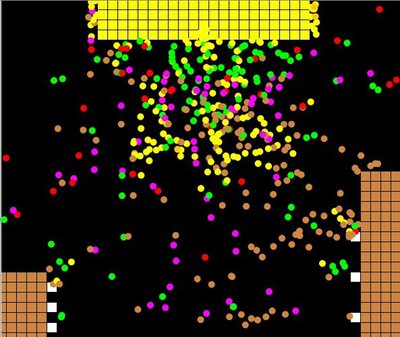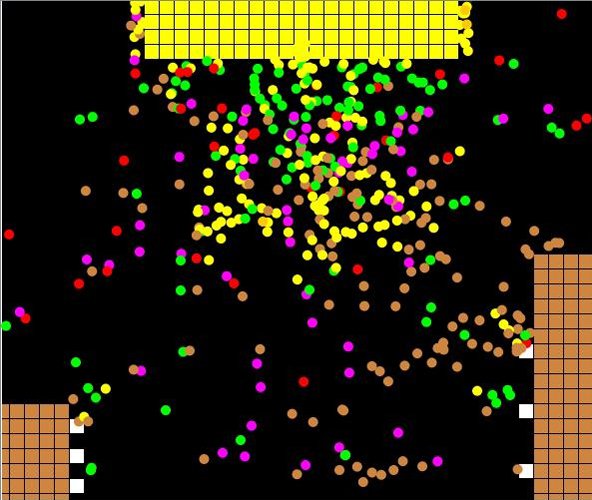CROSS - crowd behaviour modelling: a festival crowd model (1.0.0)
CROwd Simulation of Situated individuals represents a modern generation simulation as a (social) scientific tool for understanding crowd behaviour. The CROSS model represents individuals in a crowd as social-cognitive agents that are affected by their social and physical surroundings and produce behaviour and behaviour patterns. Understanding is sought by relating the intra- and inter-individual level levels of behaviour generation with behaviour pattern emergence at group level. The CROSS model advances crowd research by adding a description of behaviour at the cognitive (intra-individual) level as well as the use of simulation experiments to test theory. The CROSS model meets the need of crowd research for a theory that reflects the dynamic interplay between individuals and their environment as well as the need for a method that allows for testing.

Release Notes
Associated Publications
Wijermans, N. (2011). Understanding crowd behaviour: Simulating situated individuals. PhD thesis.
This release is out-of-date. The latest version is
1.1.0
CROSS - crowd behaviour modelling: a festival crowd model 1.0.0
Submitted by
Nanda Wijermans
Published Feb 14, 2011
Last modified Feb 23, 2018
CROwd Simulation of Situated individuals represents a modern generation simulation as a (social) scientific tool for understanding crowd behaviour. The CROSS model represents individuals in a crowd as social-cognitive agents that are affected by their social and physical surroundings and produce behaviour and behaviour patterns. Understanding is sought by relating the intra- and inter-individual level levels of behaviour generation with behaviour pattern emergence at group level. The CROSS model advances crowd research by adding a description of behaviour at the cognitive (intra-individual) level as well as the use of simulation experiments to test theory. The CROSS model meets the need of crowd research for a theory that reflects the dynamic interplay between individuals and their environment as well as the need for a method that allows for testing.

